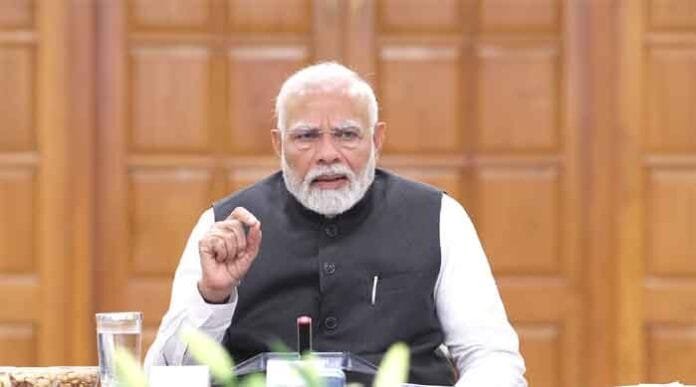New Delhi — In a significant move aimed at stemming the rising tide of cheap steel imports, the Government of India has imposed a 12% temporary safeguard duty on five key categories of imported steel products. The duty, effective for 200 days, targets only those imports priced below a notified minimum CIF (Cost, Insurance, Freight) value, offering much-needed protection to the country’s domestic steel sector, particularly its small and medium enterprises (SMEs).
A Timely Intervention to Support Domestic Producers
Amid mounting concerns over the surge in underpriced steel imports, the government’s decision is being hailed as a timely intervention to address the growing imbalance in the domestic steel market. The notification, issued by the Department of Revenue, follows recommendations made by the Directorate General of Trade Remedies (DGTR), which flagged an “alarming rise” in imports causing “serious injury” to Indian manufacturers.
The move targets non-alloy and alloy flat steel products, particularly in segments where domestic producers have been losing ground to international suppliers. It aims to restore competitiveness, prevent job losses, and stabilize prices in the domestic market.
Which Products Are Covered?
According to the official communication, the safeguard duty will apply to the following five categories of flat steel products:
Hot Rolled Coils, Sheets, and Plates
Hot Rolled Plate Mill Plates
Cold Rolled Coils and Sheets
Metallic Coated Coils and Sheets
Color Coated Coils and Sheets, whether profiled or plain
These products are essential inputs for critical sectors such as infrastructure, automotive, construction, and engineering, making the move particularly impactful across industries.
Import Price Thresholds: How the Duty Will Apply
The safeguard duty will only be imposed on imports priced below specific thresholds, which range from USD 675 to USD 964 per metric ton, depending on the product category. Any import valued at or above these CIF benchmarks will be exempt from the duty, ensuring that only underpriced and potentially disruptive shipments are penalized.
This mechanism, experts say, ensures the measure remains targeted, proportionate, and compliant with WTO rules, without stifling fair competition.
‘Step in the Right Direction,’ Says Union Minister
Welcoming the decision, Union Minister H. D. Kumaraswamy called it a “step in the right direction,” especially for small and medium-scale steel producers grappling with an onslaught of imports. “This move will deliver critical short-term relief and ensure long-term sustainability of our domestic industry,” Kumaraswamy said in a statement.
The notification follows the March 20 recommendation from the DGTR, which had initiated a formal probe after a petition filed by the Indian Steel Association (ISA). The ISA represents the country’s leading steel manufacturers, many of whom have flagged rising import volumes and shrinking domestic margins.
Inside the DGTR Report: India’s Steel Industry Under Threat
The DGTR report paints a stark picture of the challenges facing the sector. It notes that unanticipated increases in imports have led to significant damage, including:
Declining market share for Indian firms
Mounting inventory piles
Plummeting profit margins
Reduced capacity utilization
Delayed capital investments
The report attributes the surge to global oversupply, exacerbated by protectionist trade measures in developed economies, notably the United States and European Union, which have redirected low-cost steel flows toward open markets like India.
A Global Trend: India Joins Other Nations in Shielding Industry
India’s decision mirrors steps taken by other economies to shield their domestic markets. Countries such as Vietnam, South Africa, Turkey, Malaysia, Tunisia, and the EU have already rolled out tariff and quota-based safeguards to counter the dumping of cheap steel.
The European Union’s 25% safeguard duty, introduced in 2018, stands out as a precedent. India’s approach is seen as measured yet firm, reinforcing its intent to protect strategic industries while maintaining commitments to international trade norms.
How Is a Safeguard Duty Different from Anti-Dumping?
A safeguard duty is distinct from an anti-dumping duty in both scope and application. While anti-dumping measures are country-specific and target imports proven to be priced below fair value, safeguard duties apply uniformly to all countries, irrespective of origin, if imports threaten serious injury to a domestic industry.
The 12% duty thus acts as a blanket shield, allowing for immediate intervention without the procedural complexities of proving intent or unfair pricing.
Industry Response: Relief and Reassurance
The domestic steel industry, long demanding stronger protections, has welcomed the move. “This is a lifeline for the sector,” said a senior executive from a major Indian steel conglomerate. “We’ve been witnessing an influx of predatory pricing, and this safeguard gives us a fighting chance.”
The Indian Steel Association echoed similar sentiments, lauding the government’s “swift and structured” response in addressing market distortions and safeguarding industry interests.
Outlook: What’s Next for Indian Steelmakers?
In the short term, the safeguard duty is expected to bring much-needed stability to the Indian steel market. Price volatility is likely to ease, and domestic players may experience a boost in production, improved profit margins, and increased investor confidence.
Moreover, this breathing room could allow Indian producers to accelerate technological upgrades, expand capacity, and better integrate with global supply chains — goals that are central to the government’s Make in India and Atmanirbhar Bharat initiatives.
At the same time, observers note that the 200-day window must be utilized strategically. The government is expected to monitor the situation closely and review the duty before its expiry, based on market response and import behavior.
















